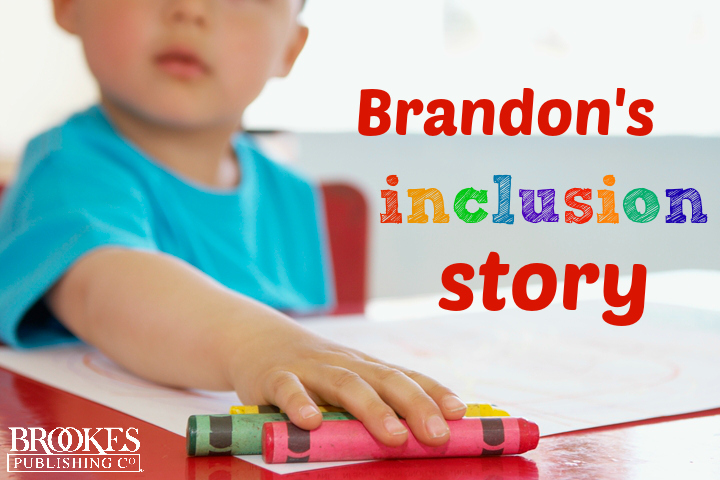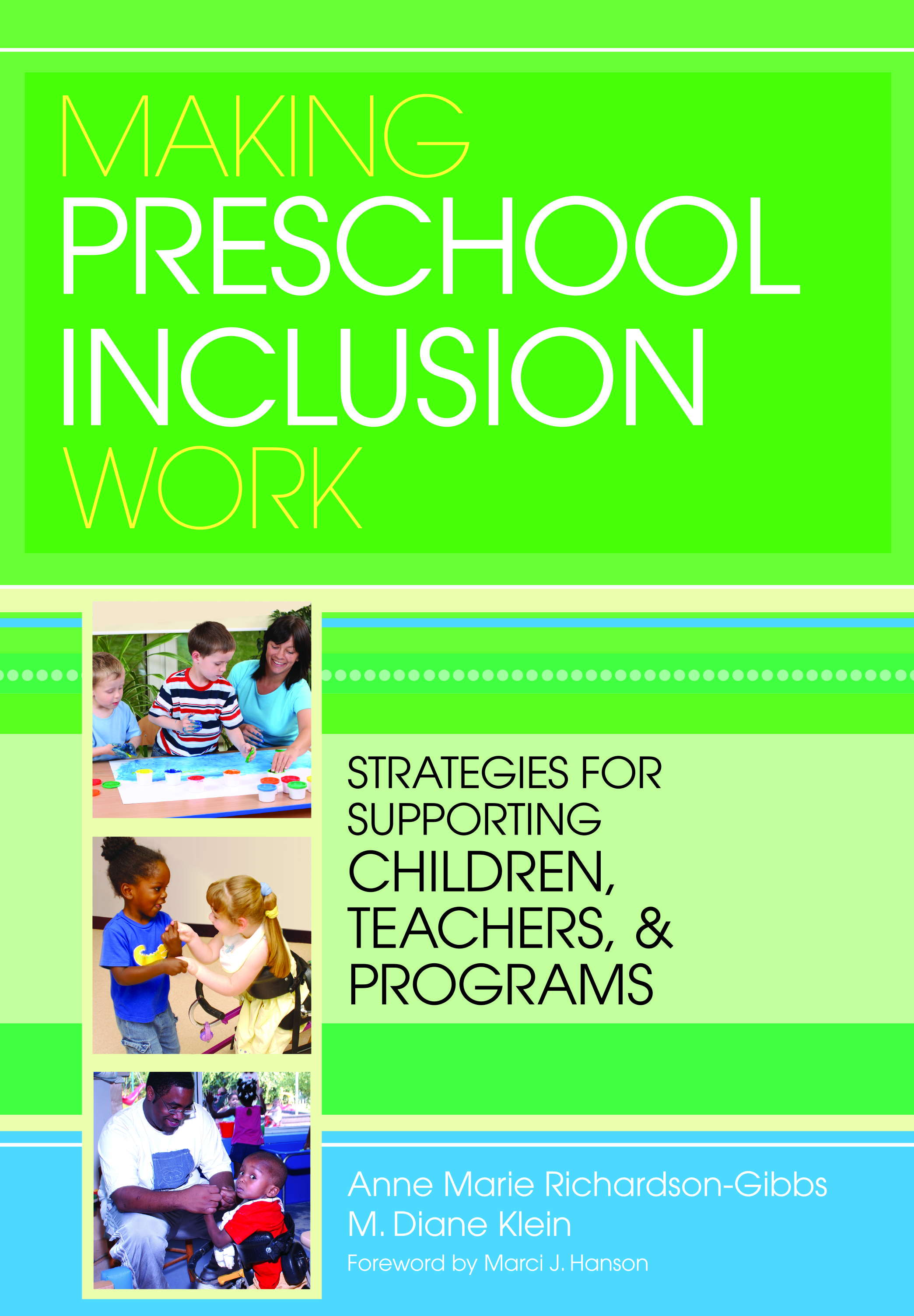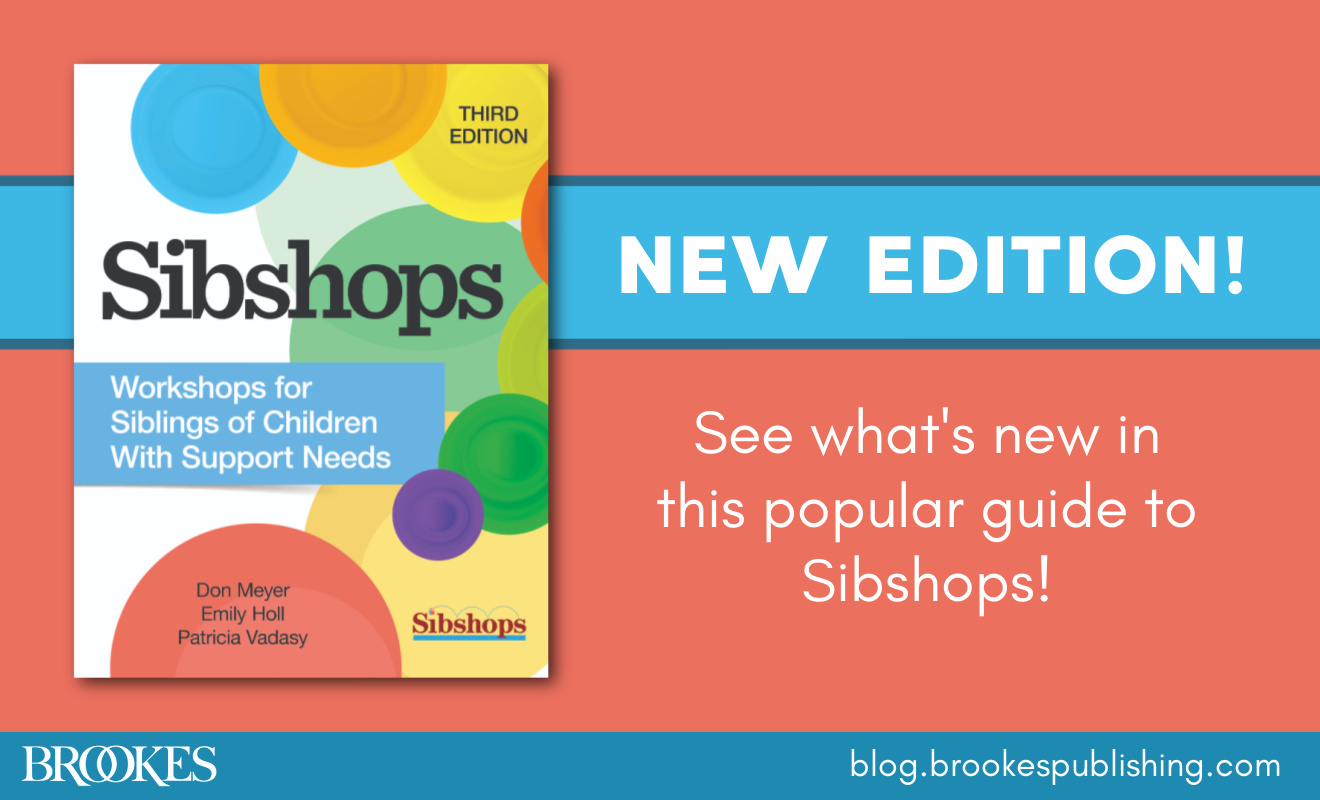Brandon’s Story: How Preschool Inclusion Helped One Young Learner with Autism
August 16, 2016
A few weeks ago, we posted an infographic on preschool inclusion–where we are with it now, why it’s important, and what we need to do to promote inclusive early childhood environments. Today’s post helps clarify the why of preschool inclusion. Adapted from Making Preschool Inclusion Work by Anne Marie Richardson-Gibbs & M. Diane Klein, this case story shows how a strong commitment to inclusion and the collaboration of a support team made a difference for Brandon, a young learner with autism.
***
When he was three, Brandon was placed in a preschool special education class. Though the class had a good reputation for meeting each child’s individual needs, Brandon’s parents noticed that his communication skills weren’t progressing and his behavior challenges were increasing. They felt an inclusive preschool would be better for their son–he’d have a chance to learn communication skills from peers and develop stronger social connections.
Their district found a spot for Brandon in an ECE program receptive to including young learners with special needs. The program had one full-time teacher and one part-time classroom assistant who could provide support (while still giving Brandon the independence he needed to work toward IEP goals).
Brandon’s IEP goals
Brandon’s goals included:
- Strengthening social communication skills
- Making transitions independently from one activity to the next
- Participating appropriately in daily routines
- Increasing participation in peer play
To reach these goals, he needed a support plan that would help him with his challenges: tactile sensitivity, limited interests, social isolation, and tantrums. A collaborative consultation model of support was written into Brandon’s IEP, which would provide him with 60 to 120 minutes of inclusion support each month.
Planning inclusion supports
- An experienced early childhood special education consultant came in several times a month, at different times of the day, for 30″“45 minutes. She observed Brandon and collected data on his behavior and participation.
- At the end of each observation, the consultant talked to Brandon’s teacher and the assistant. She helped brainstorm suggestions and modeled specific strategies for Brandon’s teachers. For example, she showed them how to increase Brandon’s participation in activities by using his existing preferences, such as playing with cars.
- Brandon also received small-group pull-out speech-and-language therapy once a week. To help Brandon generalize his new communication skills in the classroom, the consultant met with the speech-language pathologist and shared the SLP’s recommendations with Brandon’s teacher.
- The consultant also met with the district’s special education paraprofessional, who made weekly visits to Brandon’s classroom to provide additional support. The consultant and paraprofessional chose appropriate supports for Brandon, including prompts to ease transitions and enticements to support tough transitions (using 5-minute warnings, putting his favorite truck on the lunch table). After her classroom visits, the paraprofessional made notes on Brandon’s performance in each IEP goal area and shared her findings with the consultant.
- To strengthen the home-school connection, the consultant made home visits to Brandon’s mom and dad every four to six weeks. She reviewed Brandon’s progress with his family and gave them materials to help support his goals. (For example, she gave them duplicates of books and materials used in Brandon’s classroom, so his parents could reinforce key concepts at home.)
- Over time, the amount of support Brandon received per month gradually decreased. This ensured that he didn’t become too dependent on one-to-one support from an adult.
Brandon’s progress: Year 1
With support from the collaborative team, Brandon made progress in his first year of preschool. His team partnered effectively on solutions to his classroom challenges and helped him work on his IEP goals. For example, circle time was long and Brandon was having a hard time staying focused, so the consultant suggested he sit closer to the teacher and the materials. Because Brandon had strong print recognition skills, she also made name cards for the teacher to use when taking attendance, so Brandon could learn his classmates’ names. The teacher found these changes easy to incorporate, and Brandon’s engagement improved.
By the end of year 1, Brandon tolerated proximity to other children and engaged in parallel play with them, though his interactions with them were still minimal. He was able to make transitions appropriately, generally followed daily routines, and tolerated activities without meltdowns.
Brandon’s progress: Year 2
For year 2 of preschool, Brandon no longer needed direct support in the classroom. His team moved to a different support model: observation and consultation. The consultant stayed on to observe Brandon’s progress, brainstorm solutions with the classroom teacher, and provide a liaison between the SLP and the teacher to keep Brandon’s social-communication skills a high priority.
The team worked together to help Brandon move beyond parallel play and into cooperative play, increase participation in sensory activities, and prepare for the transition to kindergarten. Brandon’s kindergarten teacher for the following year came to observe the classroom, and based on her input, they also focused on developing Brandon’s listening skills.
Brandon made major progress during year 2–he participated voluntarily and appropriately in most activities, made transitions without support, engaged in some associative play with his peers, and reduced his tantrums and anxiety issues during sensory activities. Because he still had some challenges to work on (including his cooperative play skills and listening skills), his parents were concerned about moving Brandon into kindergarten. They spoke with the consultant, who agreed that one extra year in the inclusive preschool would increase Brandon’s chances for succeeding in kindergarten.
Transition to kindergarten
After one more preschool year, Brandon’s support team drew up a thorough assessment of his strengths, needs, and learning style. Everyone came together to make a transition plan for Brandon–his parents, the consultant, the school psychologist, his SLP, and his new kindergarten teacher. Brandon made a successful transition to a 5-day inclusive kindergarten, and his support team helped him expand his speech, language, and social goals. Brandon had a very successful year. He moved on to first grade, where he was fully included in the general education classroom–without extra supports!
***
 Every young learner is different, and not every child will respond to supports the same way Brandon did or make progress at the same rate. But his story shows how a collaborative inclusive environment–one in which all team members come together and communicate regularly–can help make a child’s early school years a success.
Every young learner is different, and not every child will respond to supports the same way Brandon did or make progress at the same rate. But his story shows how a collaborative inclusive environment–one in which all team members come together and communicate regularly–can help make a child’s early school years a success.
For more on preschool inclusion, check out Making Preschool Inclusion Work and read these other blog posts with practical tips on making your early childhood classroom more inclusive:




Write a Comment
Your email address will not be published. Required fields are marked *
comments
WEI WAN CHIN says
From Brandon's inclusion story, I realized that a planning support plan is needed to help Brandon with his challenges, which are tactile sensitivity, limited interests, social isolation, and tantrums. With support from collaborative team, the teacher found these changes easy to incorporate and Brandon's engagement improved. By the end of Year 1 of preschool, Brandon was able to make transitions appropriately , followed daily routine and tolerated without meltdowns.
For Year 2 of preschool, Brandon no longer needed direct support in the classroom. The team worked together to help Brandon to participate in sensory activities and prepare for the transition to kindergarten.
With the cooperative of Brandon's parents, the consultant and the school psychologist, Brandon made a successful transition to kindergarten.
Brandon's story shows how a collaborative team members can make a child's early school years a success.
Post a Comment